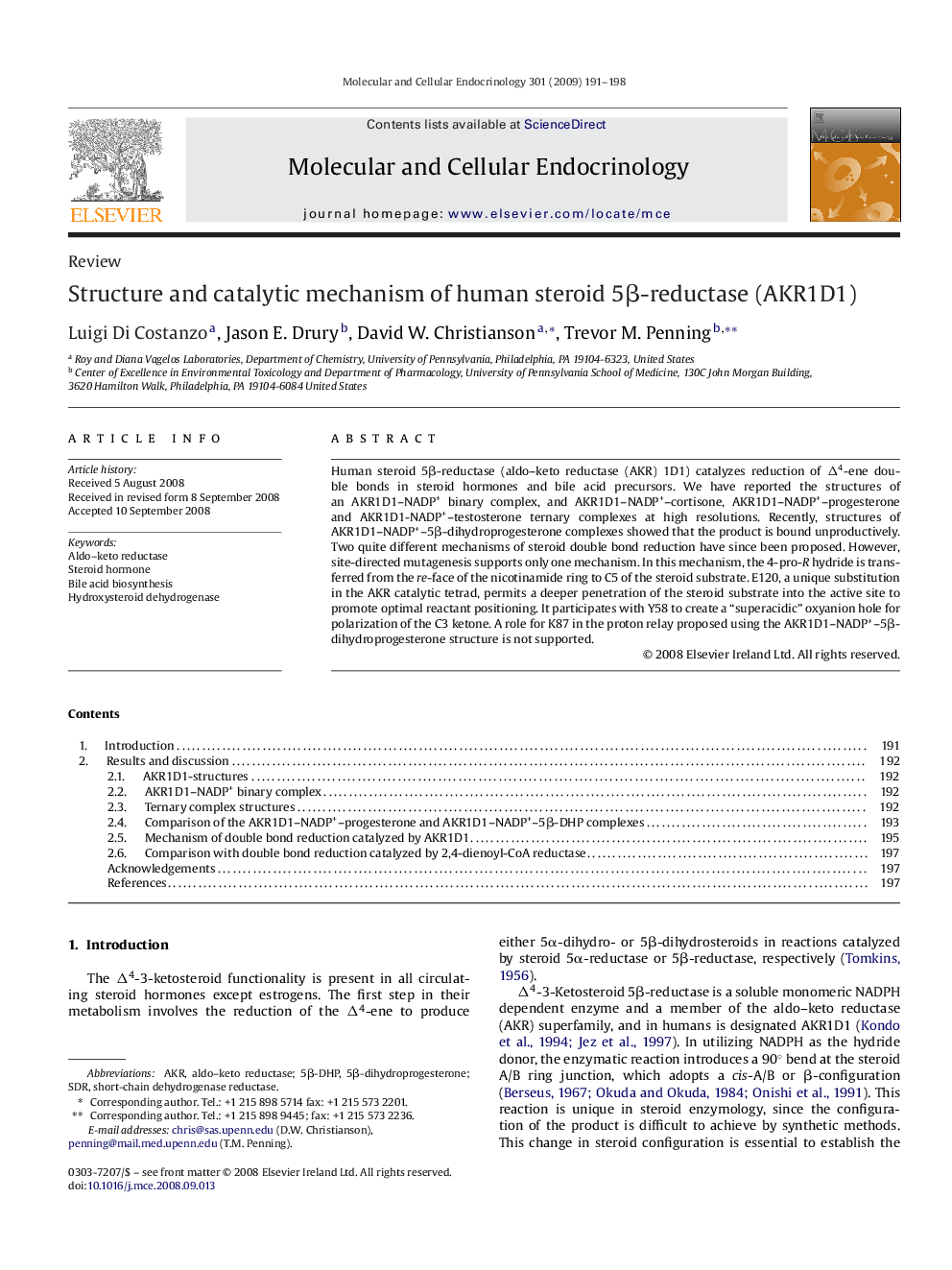| Article ID | Journal | Published Year | Pages | File Type |
|---|---|---|---|---|
| 2197377 | Molecular and Cellular Endocrinology | 2009 | 8 Pages |
Human steroid 5β-reductase (aldo–keto reductase (AKR) 1D1) catalyzes reduction of Δ4-ene double bonds in steroid hormones and bile acid precursors. We have reported the structures of an AKR1D1–NADP+ binary complex, and AKR1D1–NADP+–cortisone, AKR1D1–NADP+–progesterone and AKR1D1-NADP+–testosterone ternary complexes at high resolutions. Recently, structures of AKR1D1–NADP+–5β-dihydroprogesterone complexes showed that the product is bound unproductively. Two quite different mechanisms of steroid double bond reduction have since been proposed. However, site-directed mutagenesis supports only one mechanism. In this mechanism, the 4-pro-R hydride is transferred from the re-face of the nicotinamide ring to C5 of the steroid substrate. E120, a unique substitution in the AKR catalytic tetrad, permits a deeper penetration of the steroid substrate into the active site to promote optimal reactant positioning. It participates with Y58 to create a “superacidic” oxyanion hole for polarization of the C3 ketone. A role for K87 in the proton relay proposed using the AKR1D1–NADP+–5β-dihydroprogesterone structure is not supported.
